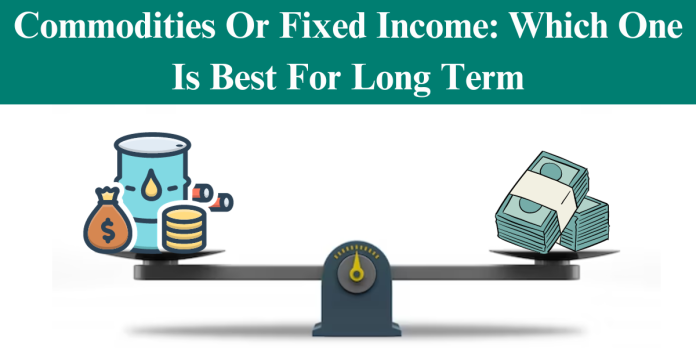When deciding between commodities and fixed income for long-term investments, it’s crucial to understand the differences between these asset classes and carefully analyze your individual risk tolerance and investment goals.
Commodities
Commodities, ranging from oil and metals to coffee and agricultural products, are influenced by supply and demand dynamics shaped by economic conditions, weather patterns, and global events. While offering the potential for high returns, investing in commodities involves significant volatility.
Investors can engage with commodities through futures contracts, exchange-traded funds (ETFs), and commodity-linked notes, providing avenues to capitalize on market movements.
A key advantage of commodities is their potential to offer inflation protection, acting as a hedge during periods of rising demand and contributing to portfolio diversification. However, it’s crucial to acknowledge the inherent risks, including high volatility and susceptibility to external factors like geopolitical events. Successful commodity investing demands intricate strategies and a thorough understanding of market conditions.
Read: Equities Or Commodities: Which One Is For You?
Fixed Income
Fixed-income investments, comprising debt securities like government and corporate bonds, are characterized by predictable income through regular interest payments and potential principal appreciation at maturity. In contrast to commodities, fixed-income instruments are generally less volatile.
Investors can access fixed income through various avenues, including individual bonds, bond funds, and exchange-traded funds (ETFs). This diversity of investment vehicles offers flexibility in constructing fixed-income portfolios.
Fixed income provides a stable income stream, and lower volatility, and is often considered more straightforward to understand and manage compared to commodities. However, it is essential to recognize the associated risks, including interest rate risk (bond prices may fall when interest rates rise), credit risk (the risk of issuer defaulting on payments), and reinvestment risk (the need to find new investments for maturing bond principal). Understanding and managing these risks is crucial for successful fixed-income investing.
Long-Term Investment Perspective
Commodities: Long-term trends such as population growth, resource scarcity, and infrastructure development can benefit commodities. However, their returns can be impacted by volatility and unpredictable events.
Fixed Income: Bonds with longer maturities can lock in higher interest rates for the long term, providing predictable income and potential price appreciation. However, they are subject to interest rate fluctuations and credit risk.
Choosing the Right Option
The decision between commodities and fixed income depends on individual circumstances:
Risk Tolerance: If stability is preferred, fixed income may be a better choice. For those comfortable with volatility and seeking higher returns, commodities might be suitable.
Investment Goals: Fixed income can provide regular income, while both commodities and fixed income offer potential for capital appreciation over the long term, with different risk profiles.
Diversification: Both asset classes can diversify a portfolio and reduce overall risk. However, due to higher volatility, a smaller allocation to commodities may be prudent.
Conclusion
Ultimately, both commodities and fixed income offer viable options for long-term investments. The key is to comprehend their distinctions, evaluate your risk tolerance and investment goals, and make well-informed decisions aligned with your financial situation.


